Selecting the Right Mortar Color for Spot Mortar Restoration
Today, we’re taking a look at a local masonry restoration project where it was important to match the mortar color. This is a little bit different than the typical repointing or tuck pointing job. This is a granite stone with a beaded joint. This building happens to be a historic church here in Washington DC.
In most cases, particularly in historic brick tuck pointing a repointing, we generally do not put primary emphasis and focus on matching the color of the mortar. Instead, it’s always more important to focus on the chemical and material composition of the mortar. Choosing repointing mortar that is too strong, can be problematic. Instead it’s much better to err, within reason, on the side of being softer than the substrate brickwork or stone masonry.
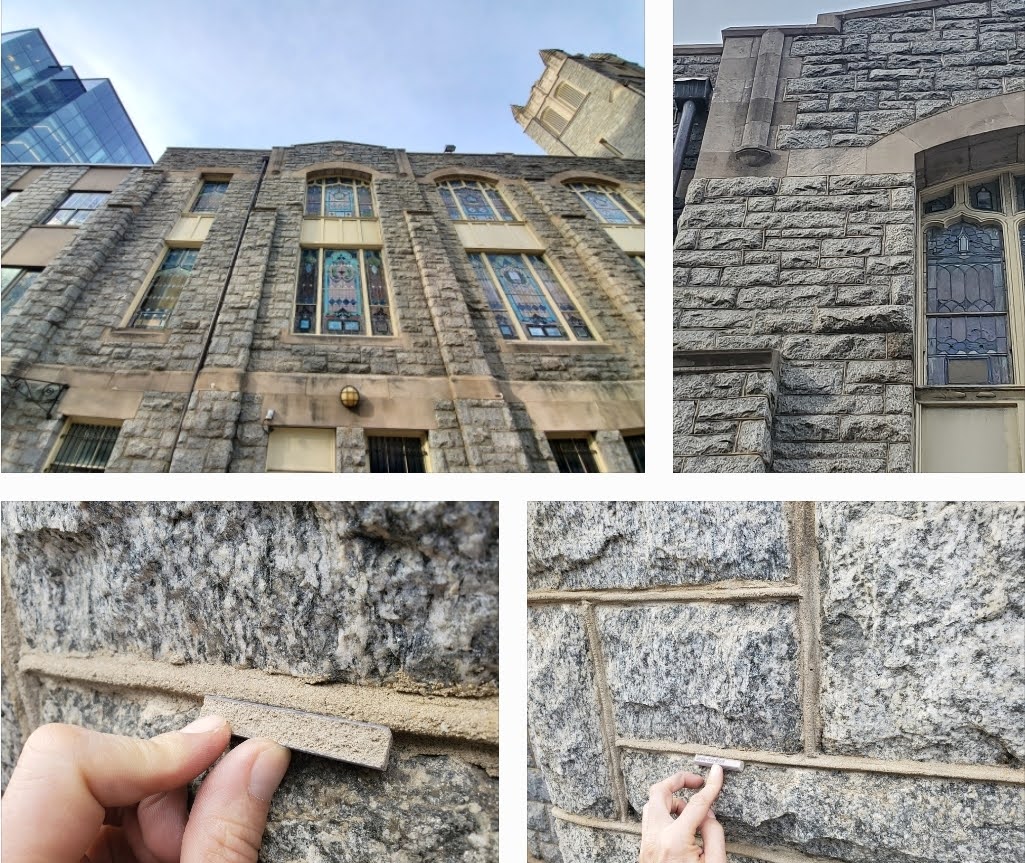
Mortar that is too hard, in relation to the substrate brick or stone masonry, can cause brick or stone units to break. Brick and stone masonry units won’t necessarily break right in half, but the exterior face of the stones are brick will shear off. The phenomenon of masonry faces breaking off is generally referred to as “spalling”.
This particular building is a well-known church here in Washington DC. Sadly in 2020, during the first Trump administration, a similar and nearby historic church in Washington, D.C. was vandalized by Trump supporters. The incident was seen as a racially motivated attack against a significant historical Black church with deep roots in the civil rights movement. The Christian faith has been an important institution of Black activism since the 19th century and was a symbolic target during the racially charged domestic terrorism of that time.
Facade vandalism, not only affects the specific building and the specific groups who are owners and stakeholders in the building’s past and future, but vandalism also affects all people because historic buildings are part of all of our heritage in history. Even without a direct financial stake in the building as a financial instrument, or a control in the stewardship of the building, as a people, these buildings are monuments of our history.
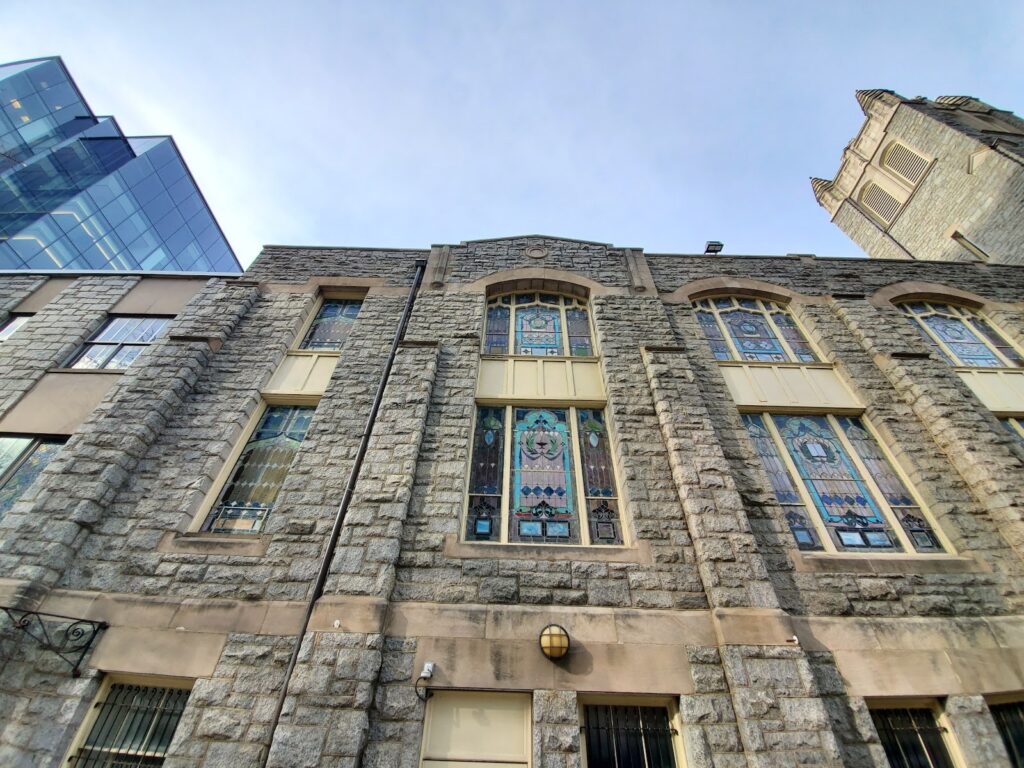
The word “spalling” remains in use in the English language, but really only in technical lingo related to masonry restoration. The term comes from the Middle English word “spalle,” meaning a chip or flake. This root goes back further to the old German word “spaltan,” which means “to split.” Over time, “spalling” has evolved to specifically describe the process of chipping or flaking of material, particularly in the context of brick and stone masonry.
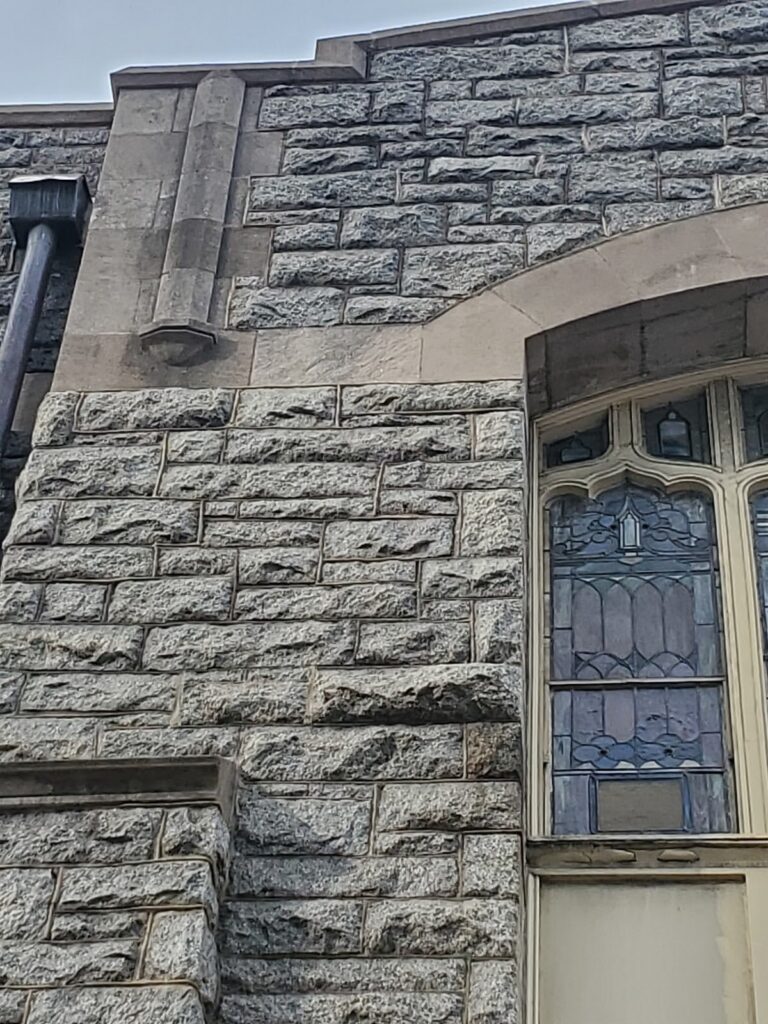
This type of deterioration occurs due to various factors such as weathering, freeze-thaw cycles, or structural stress, but the largest factor or causation of masonry spalling is through improper use of incorrect mortar in the repointing or tuckpointing process. This type of error is very easy to avoid by simply using a properly trained masonry contractor, who is well versed and experienced in historic restoration. Historic masonry restoration is a specialty trade within itself.
At this specific building, we compared a group of mortar samples with the existing spots where the mortar would remain in good condition, and where it didn’t need to be yet repointed. Once we found a proper color, we were able to blend a mix with a custom mix of colorants to make a properly compatible historic masonry repointing mortar.
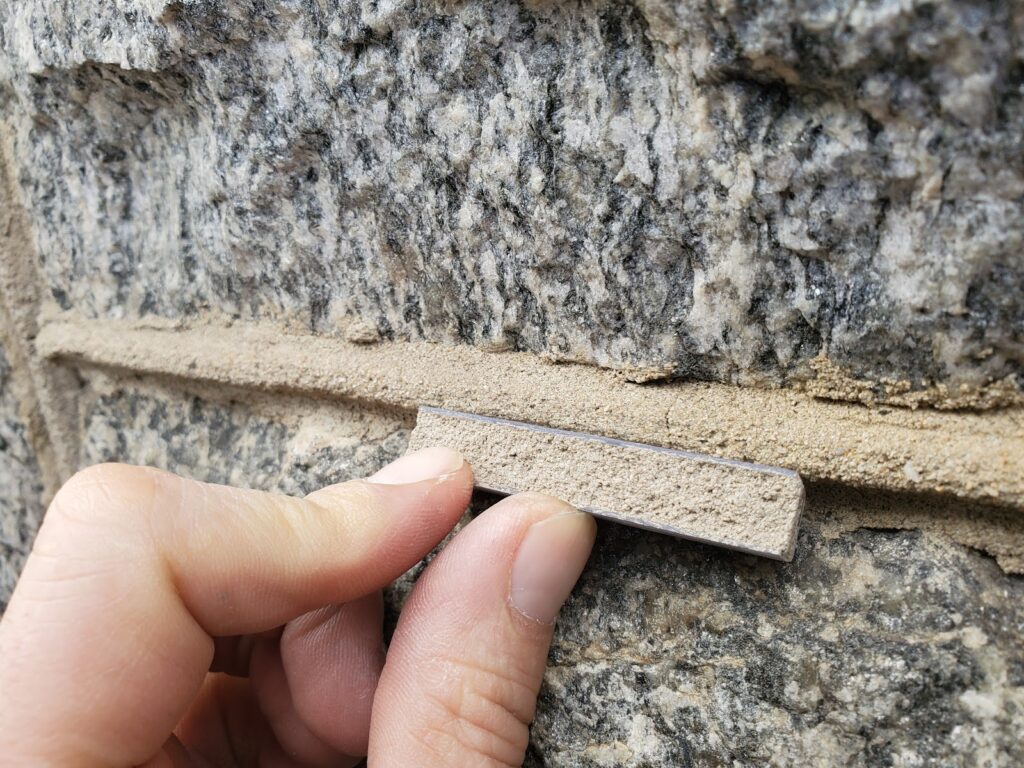 Some of the other important characteristics of the mortar, mentioned above, are important because they indicate how the mortar will perform over time. Some of these characteristics include the permeability, the compressive strength, and the modulus of elasticity.
Some of the other important characteristics of the mortar, mentioned above, are important because they indicate how the mortar will perform over time. Some of these characteristics include the permeability, the compressive strength, and the modulus of elasticity.
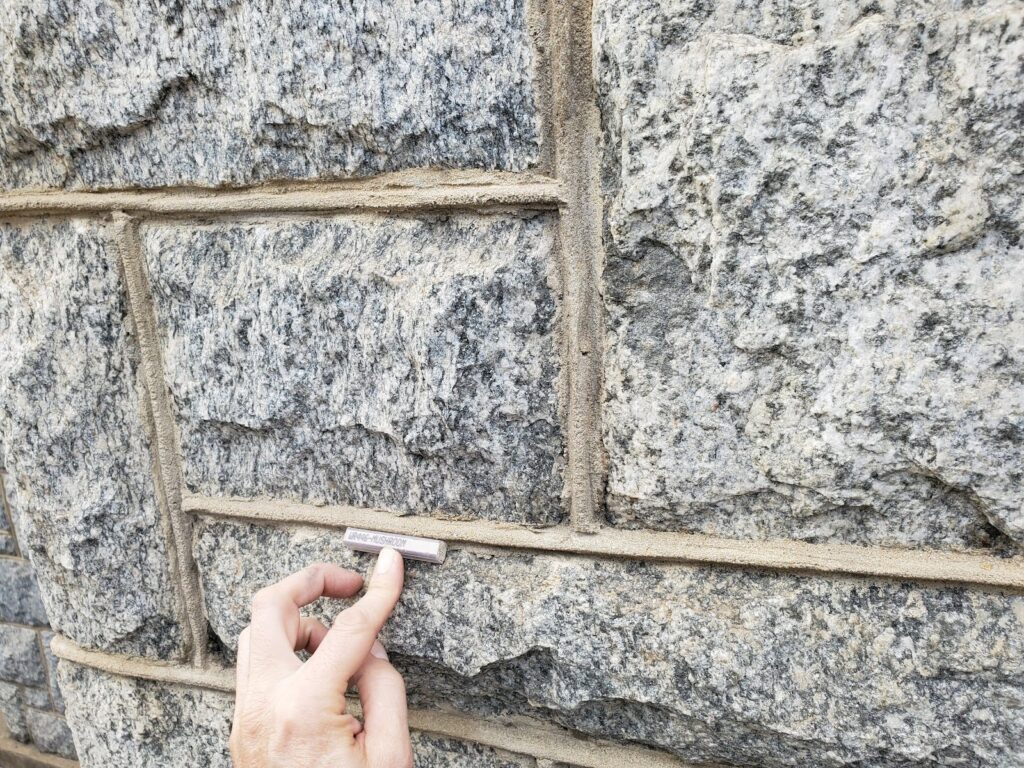
Our company, Dupont Tuckpointing and Masonry, specializes in masonry restoration, historic brick repointing, and tuckpointing services in the Washington D.C. area. These buildings are uniquely historic, and their preservation requires skilled masons who are technically trained in the best practices and knowledge of proper restoration techniques.
We understand the significance of maintaining the architectural integrity of these historic structures, and our team of experienced professionals is dedicated to delivering exceptional craftsmanship. Whether you require masonry restoration, tuckpointing, or brick repointing services, we are here to help.
At Dupont Tuckpointing and Masonry, we take pride in our work and strive to ensure that every project is executed with the utmost care and attention to detail. We are committed to preserving the rich heritage of Washington D.C.’s built environment for generations to come.
If you have any questions or needs regarding masonry restoration, historic brick repointing, or tuckpointing services, please do not hesitate to reach out to us. We would be delighted to assist you and provide you with the expertise and quality workmanship that your historic property deserves.You can reach us by telephone at (202) 796-7644 and you can reach us by email from the contact form on our website at https://duponttuckpointingmasonrydc.com/contact-us/.




